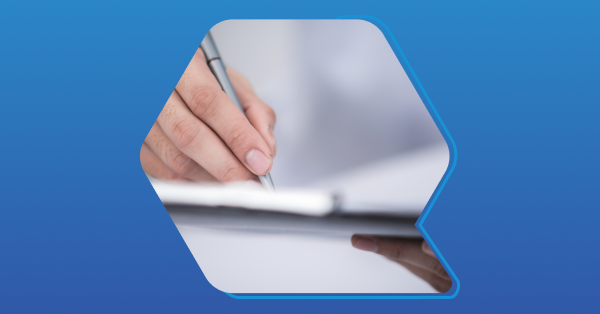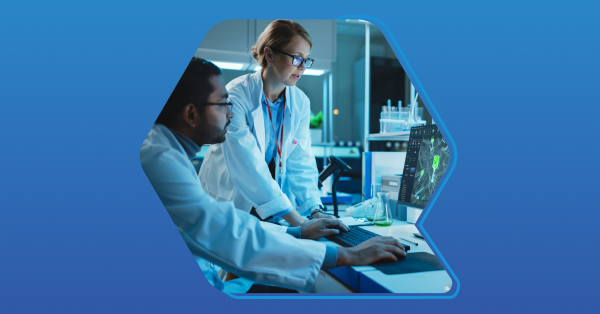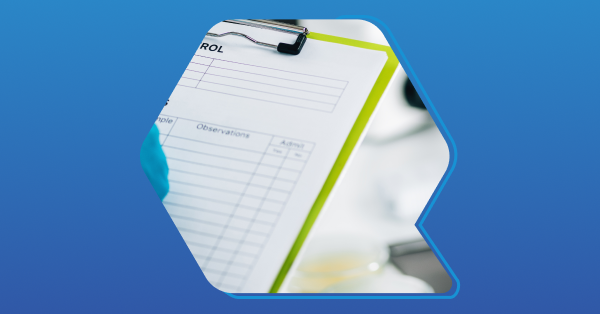Best Lab Software for ISO 17025


Is your lab gearing up for ISO 17025?
What’s your plan to pass? While technically not required, labs that wish to demonstrate the reliability, competency, and integrity of their results need to meet ISO standards. Meeting ISO 17025 is not a one-and-done activity, though, especially if you try to manage everything manually.
For labs that want to scale and meet strict compliance standards, software is a must. In this article, we’ll break down ISO 17025 and the best software solutions available to labs to meet its standards.

What is ISO 17025
ISO 17025 is an internationally recognized standard that specifies requirements for the competence, impartiality, and consistent operation of laboratories.
ISO is reviewed every 5 years; the latest version (officially known as ISO/IEC 17025:2017) was reviewed and reconfirmed in 2023.
This standard is a global benchmark for laboratories wishing to demonstrate their ability to produce reliable results, enhancing confidence in their work worldwide. While not technically mandatory, it is helpful for testing, calibration, government, research, and quality control laboratories to demonstrate the reliability of their data.
What are the Requirements for ISO 17025
ISO 17025 can be broken down into five basic requirements:
- General requirements: Covers the lab’s ability to demonstrate impartiality and confidentiality.
- Structural requirements: Covers the lab’s ability to demonstrate a person with management responsibility for the lab, a legal entity responsible for testing and calibration activities, and proper document procedures.
- Resource requirements: Covers the lab’s ability to demonstrate staff training, proper facilities to conduct tests, and regular maintenance and calibration of equipment.
- Process requirements: Covers the lab’s ability to demonstrate proper record-keeping, handling of samples, and control of data.
- Management requirements: Covers the lab’s ability to demonstrate proper storage of documents, proper risk management protocols, and regular internal audits to conform with ISO standards.
Each category ensures laboratories operate under a quality management system that enhances their ability to consistently produce valid results.
For an in-depth review of these requirements, check out our guide to ISO 17025 for labs.
What Software Should Labs Use to Meet ISO 17025 Standards?
There are three common software platforms used to help meet ISO standards. They are:
- ELN (Electronic Lab Notebook)
- QMS (Quality Management System)
- LIMS (Lab Information Management System)
Electronic Lab Notebook (ELN)
Like a physical notebook, an ELN can help with the documentation, storage, retrieval, and sharing of experimental data and processes for a lab. Recall that document storage is a key piece of meeting the ISO 17015 requirements.
An ELN can be used to:
- Capture and search detailed experimental procedures, observations, and results.
- Share real-time research data and notes with colleagues.
- Integrate data from laboratory instruments and databases.
- Follow documentation requirements with audit trails, electronic signatures, and digital entries.
An ELN can help digitize your lab’s records and processes. However, an ELN is primarily an electronic version of a physical notebook and will fall short of the other requirements. For example, an ELN cannot calibrate instruments or ensure the integrity of your samples and reagents. For that, a QMS or a LIMS are better options.
Quality Management System (QMS)
A QMS is a software platform that documents processes, monitors quality control, keeps tabs on instrument calibration, and tracks processes and modifications.
A QMS is a great asset in meeting ISO requirements. A QMS can help with:
- Managing the creation, review, approval, and distribution of documents, often called SOPs (Standard Operating Procedures).
- Overseeing changes to processes, equipment, or documentation.
- Tracking employee training and competencies.
- Addressing and preventing quality issues.
- Planning, conducting, and following up on internal and external audits.
- Identifying, assessing, and mitigating quality-related risks.
- Ensuring adherence to relevant regulations and standards.
A QMS is a common choice for labs that want to improve their quality assurance/control practices. A LIMS often combines these features with a broader set of features to support labs looking to improve their processes.
Laboratory Information Management System (LIMS)
A LIMS is a software-based solution designed to support modern laboratory operations. It's a comprehensive platform that helps manage, track, and streamline your lab, from sample management to data analysis and reporting.
A LIMS can be particularly valuable for:
- Ensuring data integrity and traceability
- Standardizing processes and reducing human error
- Facilitating regulatory compliance through built-in controls and audit trails
- Streamlining documentation and record-keeping
- Monitoring and calibrating instruments
- Managing inventory of samples and reagents
- Automating processes to reduce manual data entry errors
- Storing documents and SOPs
Of the three platforms available to labs, a QMS is likely the most qualified on its own to help your lab meet ISO 17025 standards, however, a LIMS combined with a QMS is far more powerful. By matching QMS elements like doc management, Deviations, CAPA management, and training with LIMS capabilities to digitize your records, calibrate instruments, and automate processes, your lab’s path to certification can be much smoother.
We happen to know of a LIMS with a built-in QMS. One that gives you the best of both worlds between these powerful platforms.

Which LIMS is Best for ISO 17025?
Of all the LIMS available, which one is the best for modern labs looking to scale and meet these rigorous regulatory standards?
We’ve written extensively on the best LIMS available on the market, and of that list, there is a clear winner: QBench.
Why QBench is a leading option for labs of all sizes
QBench matches its LIMS with a tightly integrated QMS. Pairing these tools together, rather than buying separate solutions, makes QBench the premier solution for labs that need an all-in-one platform to meet these rigorous compliance requirements.
Unlike a customizable LIMS, which requires complex code and expensive development work to make changes, QBench is a flexible and configurable platform that enables you to automate pretty much anything in your lab without a developer. Whether your lab workflows evolve over time or you purchase new equipment, your LIMS can adjust as you do to help you stay compliant.
Many second-time LIMS buyers have felt the pain of legacy LIMS and how vendor-created, code-driven customizations lead to slow, costly updates. QBench is different. Our deep workflow configurability and flexible, easy-to-use tools allow for quick workflow adjustments, report modifications, and automation tweaks. Not only is QBench a robust and powerful LIMS with numerous integrations and a RESTful API, but it is also incredibly easy to use and configure to meet your lab’s needs.
Why QBench is the Best LIMS to Support ISO 17025
QBench isn’t just easy to use; it’s one of the best LIMS on the market for helping your lab meet rigorous ISO standards. Here’s why:
- Integrated QMS: With QBench, you can get a QMS that is tightly integrated with your lab’s data, making quality assurance and control practices easy to implement. QBench’s built-in QMS allows you to track quality records, instrument calibration, and maintenance records, as well as share SOPs, store, draft, version, and approve documents, train staff, manage deviations, manage Corrective and Preventive Actions (CAPA), and more.
- Configurable automations: QBench supports no-code configurable automations, allowing you to automate processes, drastically reduce manual work and data entry errors, and get more done. Improve your lab’s workflows and processes with ease thanks to QBench’s configurable approach to automation.
- Security as a priority: The QBench team takes security and compliance seriously. We are SOC2 compliant, ISO-17025 compatible, and HIPAA compliant, and we implement security measures like audit trails, role-based access, and regular data backups to ensure your data is secure and recoverable.
- Stellar implementation: Need help implementing your LIMS and setting your lab up for success? The QBench team are experts at LIMS implementation and can give you a custom and timely implementation plan to ensure that your lab hits the ground running and is prepared for any standard.
- Market-leading partner: QBench sits at #1 on G2’s list of the Highest-rated LIMS in North America for a reason. QBench earns high marks on G2 for Ease of Use, Ease of Setup, Ease of Doing Business With, Quality of Support, and Ease of Admin.
Check out the Best Lab Software for ISO 17025 For Yourself: Request a Demo of QBench LIMS
Labs looking to meet ISO standards must use software to supplement (and automate) their processes; otherwise, they face a long and challenging upward climb.
There is no better software platform to support ISO 17025 than a robust LIMS, and of the best LIMS on the market, QBench provides a complete solution for labs. Not only does QBench provide a robust LIMS complete with automation, sample management, and compliance features - our integrated QMS gives you everything you need to automate, document, and optimize your lab. With QBench LIMS, there is nothing stopping your lab from showcasing its reliability and trustworthiness to the world.
Ready to streamline your lab or curious to learn more about how QBench LIMS can help you?








